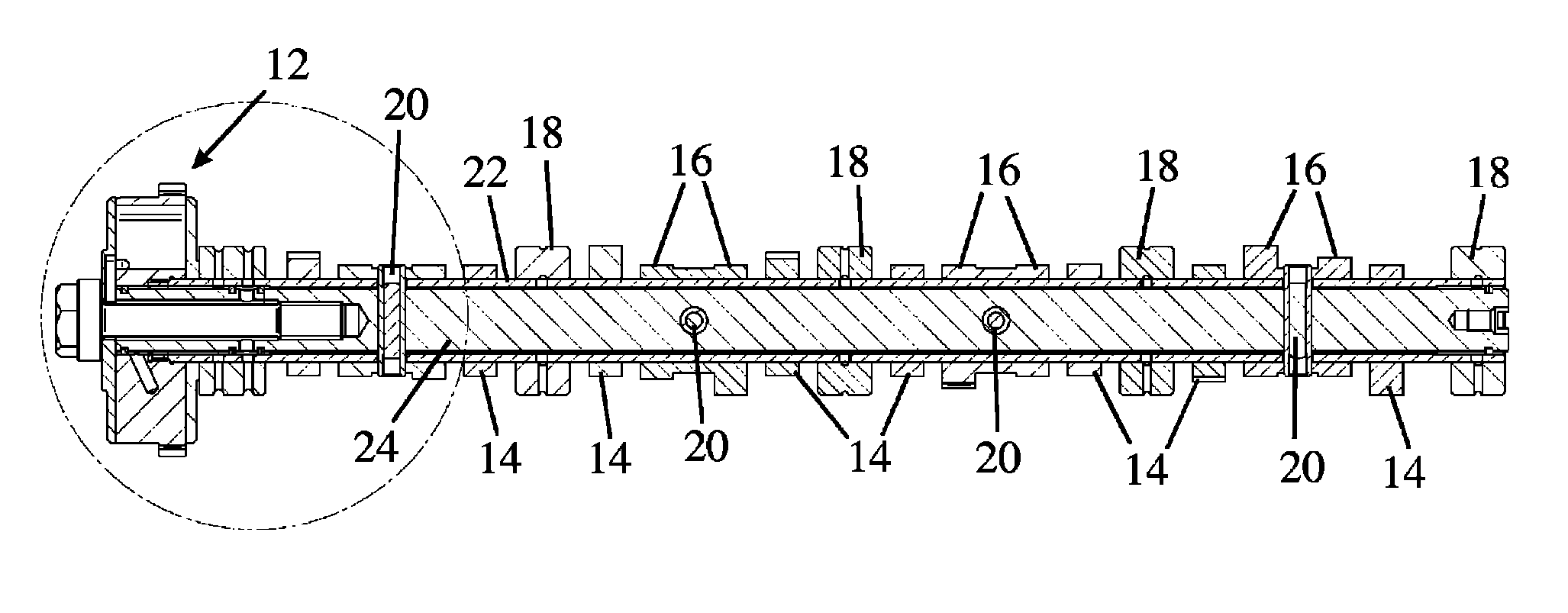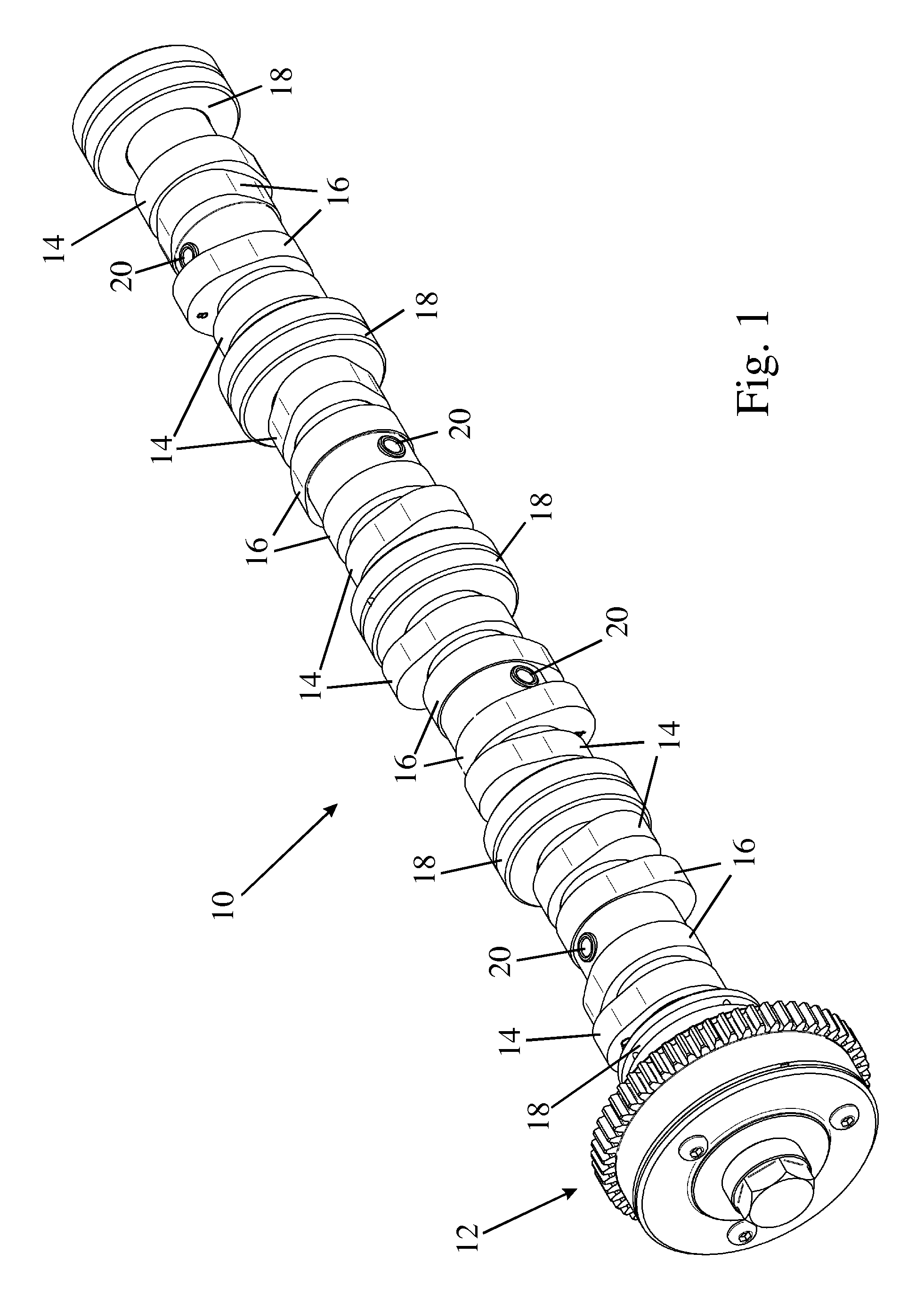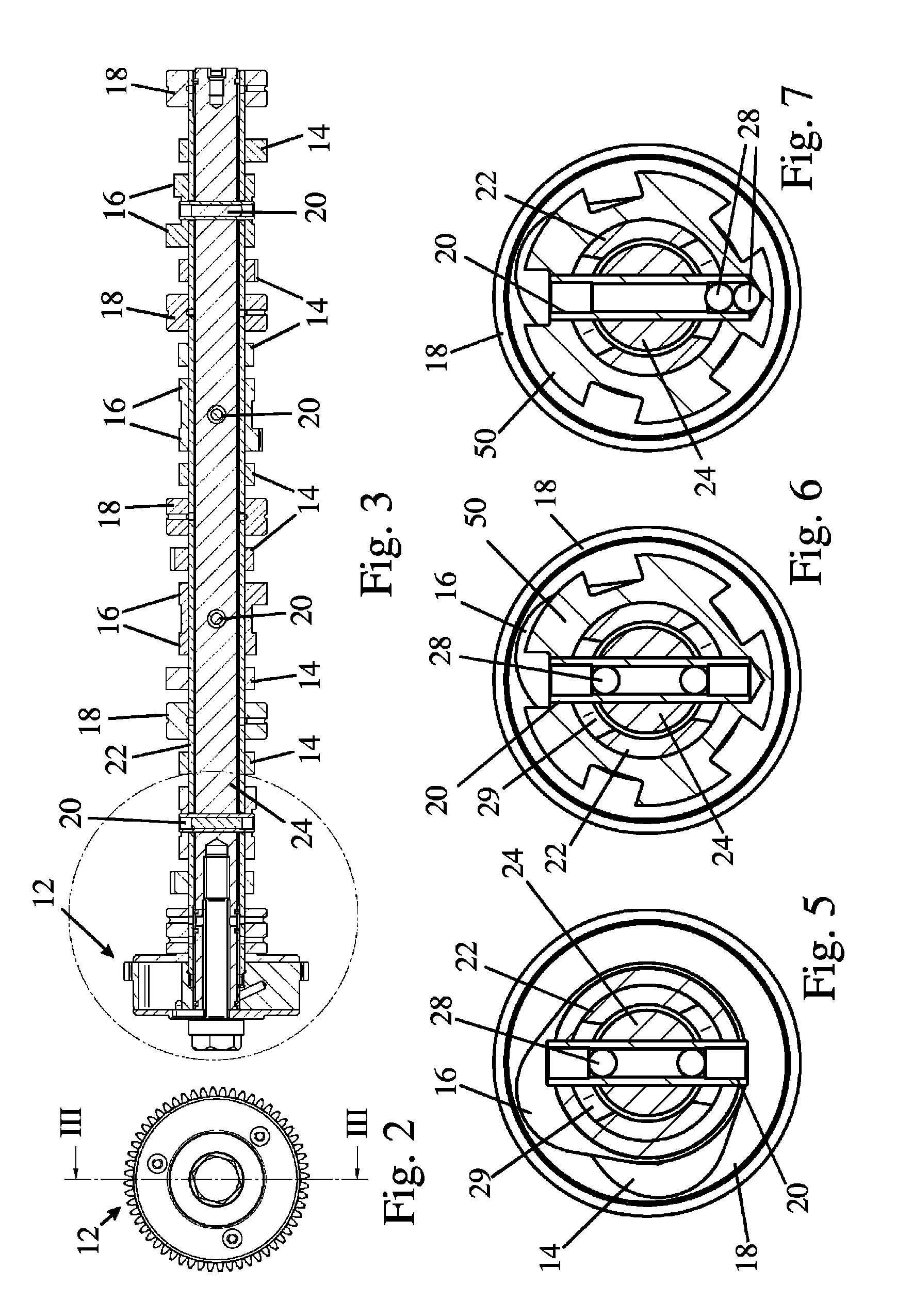Camshaft assembly
a camshaft and assembly technology, applied in the direction of valve details, valve arrangements, valve drives, etc., can solve the problems of camshafts being sensitive to component manufacturing tolerances, drive shafts being unable to lock in bearings, inner shafts being unable to rotate relative to the outer tubes of camshafts, etc., to reduce the tolerance sensitivity of scp camshaft assemblies
- Summary
- Abstract
- Description
- Claims
- Application Information
AI Technical Summary
Benefits of technology
Problems solved by technology
Method used
Image
Examples
Embodiment Construction
[0022]FIGS. 1 to 4 show an assembled camshaft 10 with a camshaft phaser 12 mounted on one of its ends. The phaser 12 is not described in detail but may for example be a vane type phaser as described in GB 0428063.2. The assembled camshaft 10 comprises an outer tube 22 and an inner shaft 24 arranged within the outer tube 22 but not supported by it nor making direct contact with it. Directly mounted on the outer tube 22 for rotation therewith are cams 14 of a first group and support bearings 18. The bearings 18 and cams 14 may for example be heat shrunk onto the outer tube 22.
[0023]A plurality of sleeves formed with cams 16 of a second group are mounted to rotate freely about the outer surface of the outer tube 22 and are connected by means of pins 20 for rotation with the inner shaft 24. As can be seen from FIGS. 1 and 3, the axes of the two end pins 20 are arranged in a plane perpendicular to that containing the axes of the two remaining intermediate pins 20. Because of the mutual i...
PUM
 Login to View More
Login to View More Abstract
Description
Claims
Application Information
 Login to View More
Login to View More - R&D
- Intellectual Property
- Life Sciences
- Materials
- Tech Scout
- Unparalleled Data Quality
- Higher Quality Content
- 60% Fewer Hallucinations
Browse by: Latest US Patents, China's latest patents, Technical Efficacy Thesaurus, Application Domain, Technology Topic, Popular Technical Reports.
© 2025 PatSnap. All rights reserved.Legal|Privacy policy|Modern Slavery Act Transparency Statement|Sitemap|About US| Contact US: help@patsnap.com



